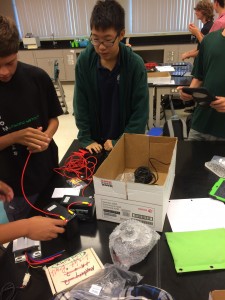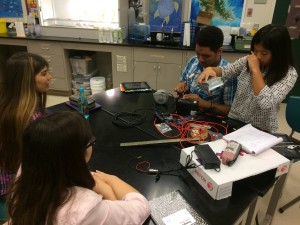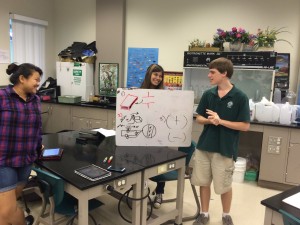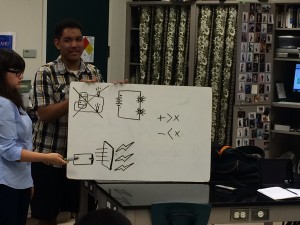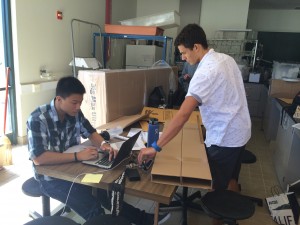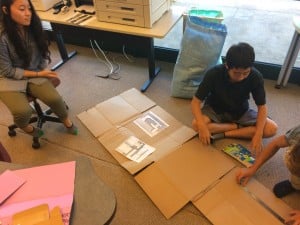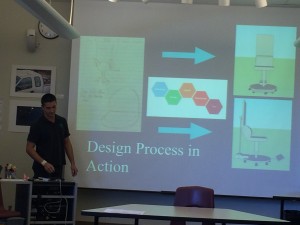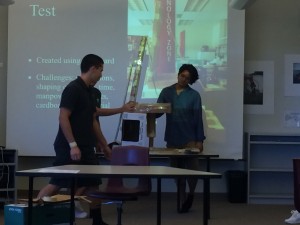It’s been a few weeks since the last post, – not an indication of little happening, but more a case of a flood of activity that’s been hard to sit down and organize and share.
Certainly the photo streams that I post on Flickr have been updated regularly:
For the design class here: https://www.flickr.com/photos/121697751@N02/sets/72157646692621755/
For the MPX stem class here: https://www.flickr.com/photos/121697751@N02/sets/72157646271766017/
It’s late on a Friday already, but it’s worth sending out a few ideas about what we’ve been working on – things have been exciting and reaching some interesting points in our work.
One of the things that is clear is that in both of the classes that I’ve been working with, the need for structure around the things we’re learning is clear and fits well within our understanding of how we learn science around us – if we can develop effective, simple and applicable models of the way things behave, then it makes them easier to apply an understanding novel situations.
STEM
The big activity we have been working towards has been building electric bikes – not a ready-made kit with easy to attach parts, but the nitty-gritty and get your fingernails dirty kind of building that involves identifying parts that put together would allow a cheap, effective and creative way to provide urban transportation. In order to get to this, a fundamental understanding of electricity and magnetism are necessary so that when we are connecting these industrial grade parts we have an appreciation of things like voltage, current limits, parallel and series and their role, why wires have different gauges… Etc.
In order to set the foundational knowledge for this, we needed to have a good working model for understanding electricity. Back in my modeling experiences from the 1990s, I was introduced to CASTLE (Capacitor-Aided System for Teaching and Learning Electricity) approach to learning electricity which was developed by Melvin Steinberg of Smith College and uses a compressible fluid approach to understanding how charge flows in circuits ( a brief description of the curriculum and its rationale here:http://www.pasco.com/prodCatalog/EM/EM-8624_castle-kit/ ). I really believe in this kind of structured but constructivist approach to building an understanding of circuits, charge flow, and a functional understanding of what’s going on with electrical devices, so we’ve been using this to build our foundational knowledge as we have been unpacking our kits.
This week we reach the culminating point where the students started hooking up the parts of their electric bike kit and needed to learn everything from the correct schematics to hook it up, to stripping wire and crimping connectors to make things fit together correctly – a lot of this was new to me working with the scale of items and it was both exciting and challenging to make sure the students were able to work on these ideas. By the end of class today, Friday, two of the five groups had connected the parts together and successfully got their motors working through the controller and the throttle – success! There are more pictures of the Flickr site, but here’s a few pictures below. Next week, we get to the really challenging work – how to put these parts on a bicycle so that it is powered and can be used to transport students across our campus.
click here for a movie of a groups working motor
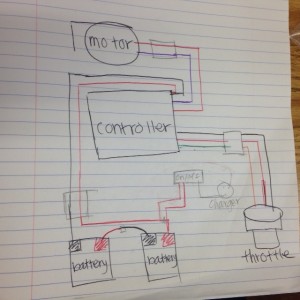
All students were required to create a schematic diagram that showed the correct connections between the components for their electric bike
Innovative Design Technology
We finished the first large project and shared designs a few weeks ago, and so we wanted to give the students a few smaller challenges to give a little more variety to the design work that they have been developing. As a result, we chose a roundtable activity where we let them determine categories where design might be interesting and applicable to address real-world problems. Eight different teams ended up choosing problems with either steering wheel redesign for cars, or looking at recycling as a opportunity to think about how design could improve people’s behaviors in the process. I have attached a couple of the slide presentations in PDF format, and one of the challenges continues to be to make sure that there is good science rigor underneath the work that they are doing – in the case of their work in this round, students investigated thermodynamics, heat transfer of different materials, ergonomics as they looked out the ways in position that people hold wheels, the different kinds of plastics that exist and the ways they are recycled, and how temperature can be measured by a variety of means.
As we use our design thinking to approach problems, it becomes a really useful framework for learners to consider both what they know, how to identify a problem that needs to be solved, and a process to get to the end. We have actually looked at a couple of different models for design process – including this week how the Wright brothers attacked building the first airplane, and how engineers approach building design. The design framework becomes a means to look at problems, to think about what we know it but we don’t know, and how to quickly generate possible solutions and test them. Some pictures below as well as the presentations from this last round of work:
PDF Presentation sam audreen erika
Steering Wheel Keynote_Koa, Marshall, Sam
So much to talk about, and so I’ll try to blog more frequently over the next few weeks as we reach some culminating points in our work…

